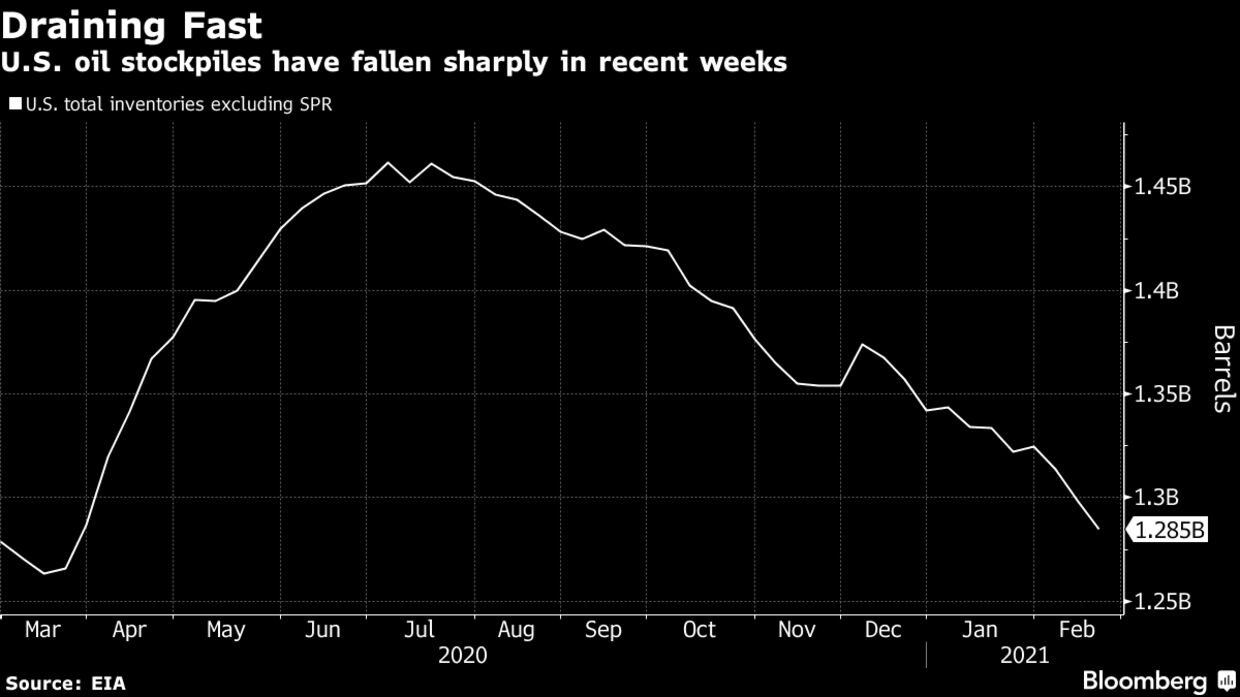Oil extended gains from its highest close in more than a year on a slump in U.S. oil inventories and a broader lift to the reflation trade taking place across global markets. Futures in New York rose near $63 a barrel. Inventories of U.S. oil have fallen by 40 million barrels over the last three weeks, with cold weather demand for heating fuels offsetting a rise in gasoline and crude stockpiles. The futures curve is continuing to indicate tightness. The market is in a backwardation of almost $6 a barrel for the next 12 months, a structure that indicates scarce supplies. There have even been tentative mentions of crude hitting $100 a barrel again in the longer term.

Oil is set for a fourth monthly gain after a pledge by Saudi Arabia to deepen output cuts accelerated a rally triggered by Covid-19 vaccine breakthroughs. While there’s been a raft of bullish calls on the outlook recently, the market is facing a possible supply increase in April from OPEC+, which meets next week to discuss its strategy with key members again differing on the way forward.
Oil “continues to benefit, just like copper, from expectations that supply will be kept tight while demand continues to recover,” said Ole Hansen, head of commodities strategy at Saxo Bank. “The question remains how much is speculative and how much is real demand driving the price higher at this stage.”
| PRICES |
|---|
|
Shale explorers reported almost 6 million barrels of combined oil-output losses during the freeze last week. Occidental Petroleum Corp. and Pioneer Natural Resources Co., two of the largest producers in the Permian Basin, alone had a combined loss of about 3.8 million barrels, according to Bloomberg News calculations based on fourth-quarter earnings reports and calls.
